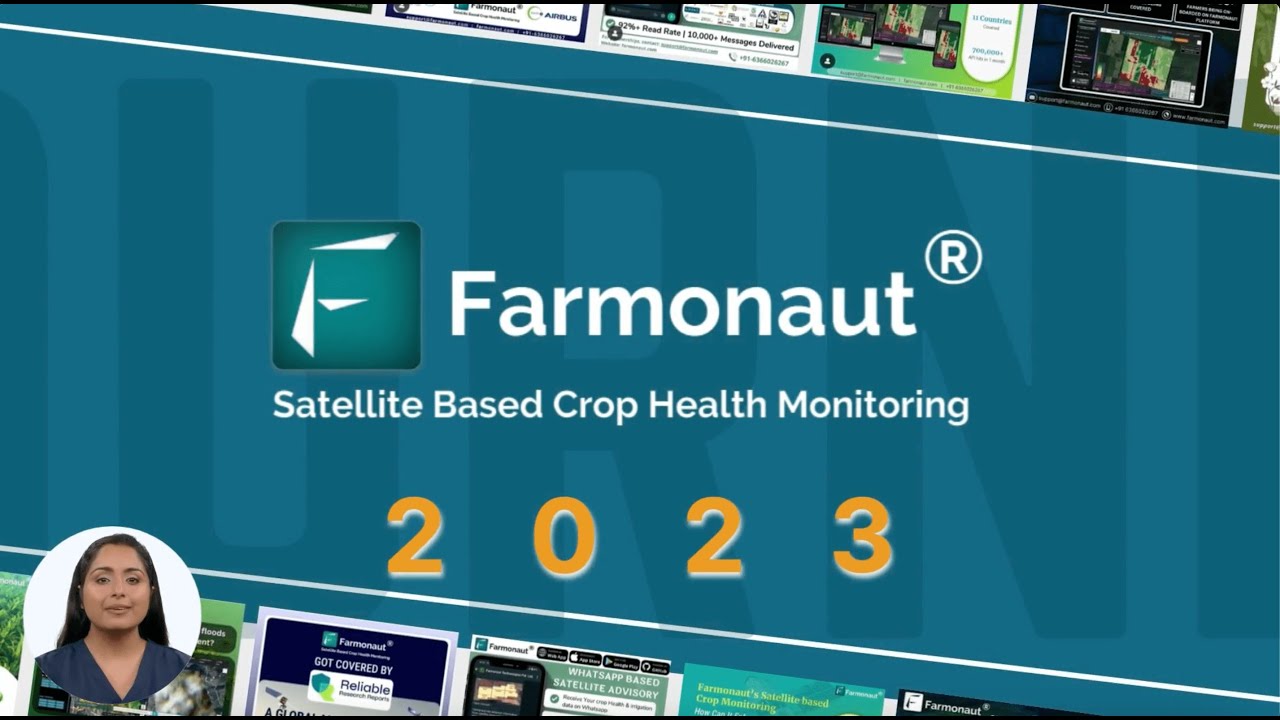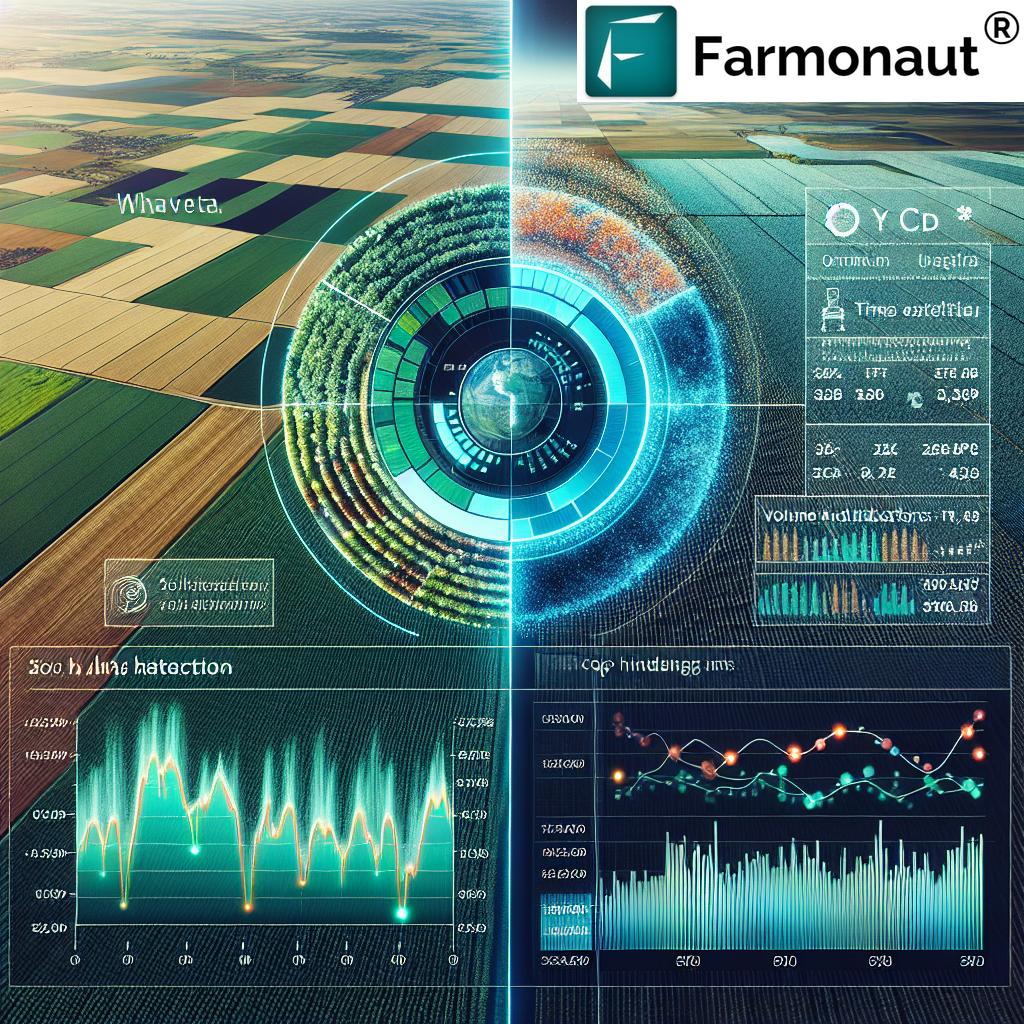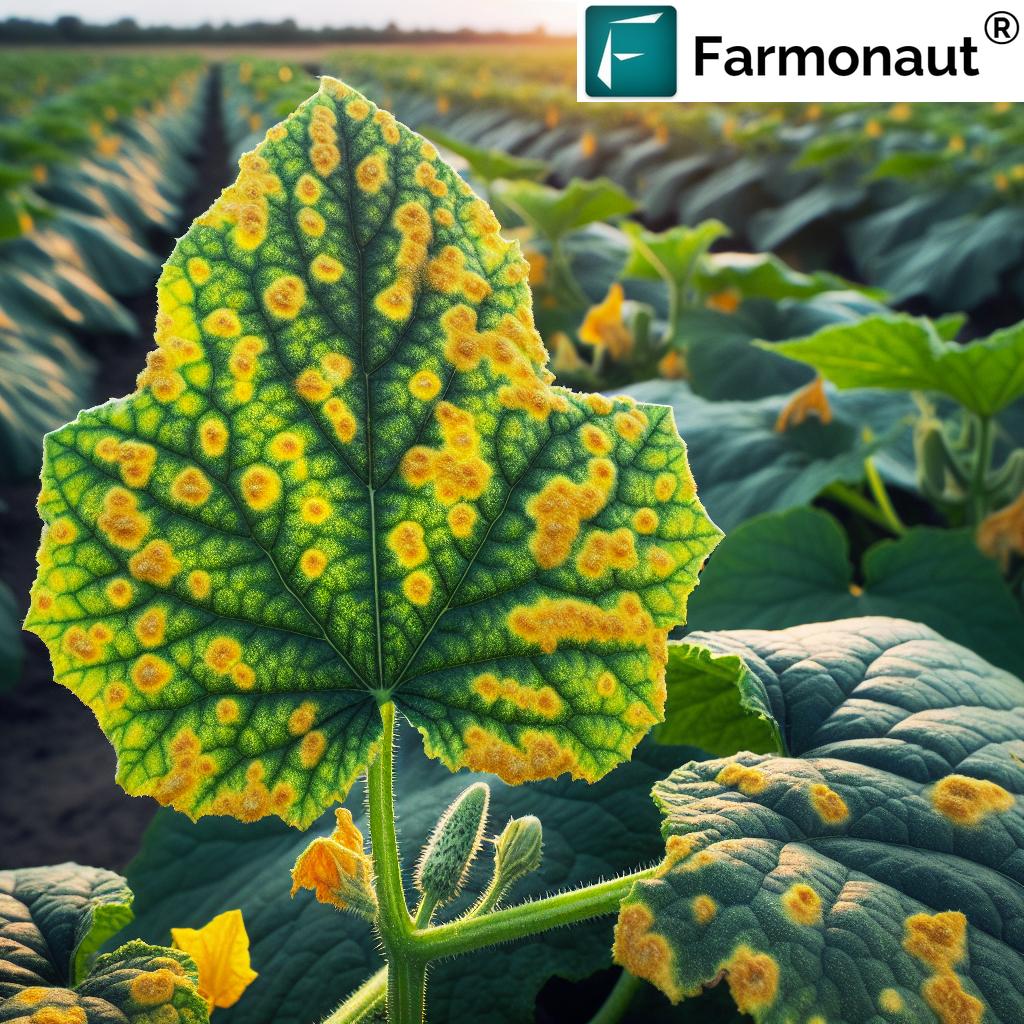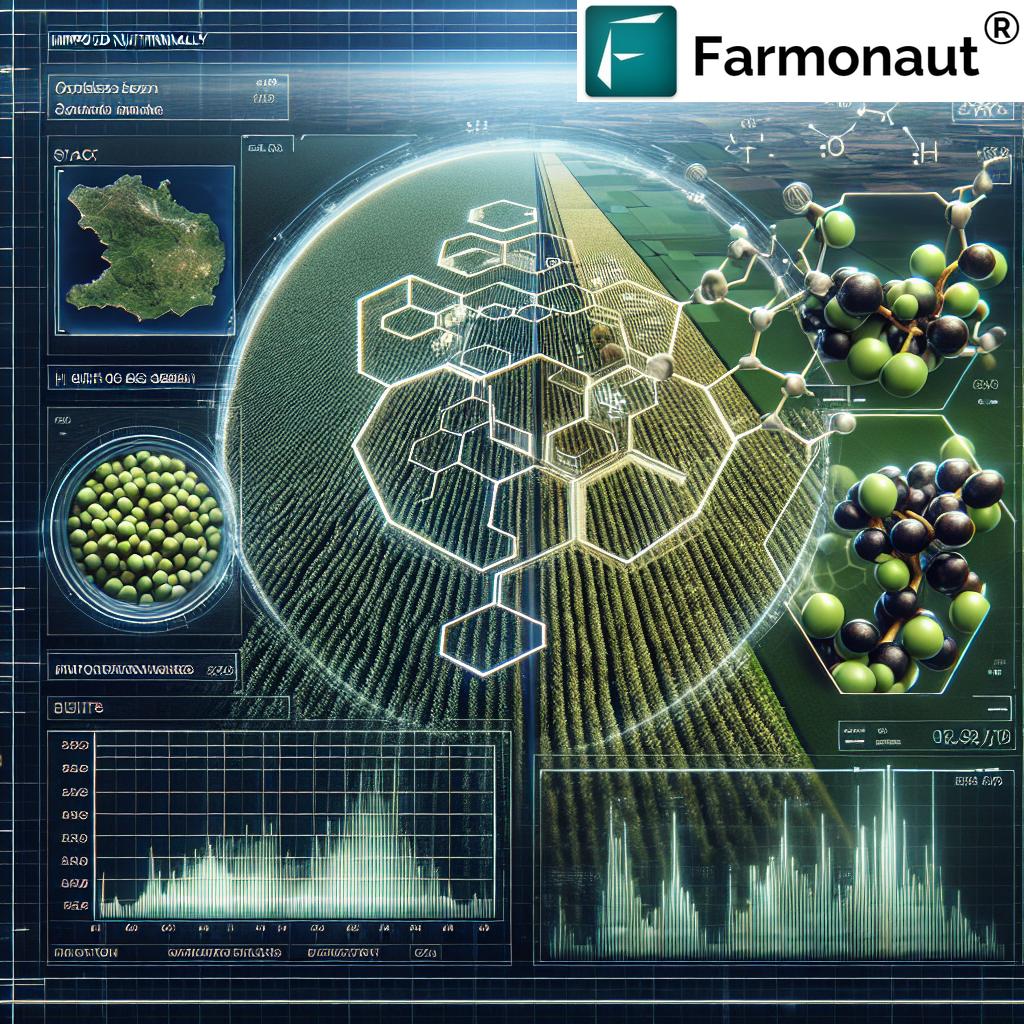Optimizing Crop Nutrient Management: Tampa’s Guide to Boosting Agricultural Yields with Precision Farming
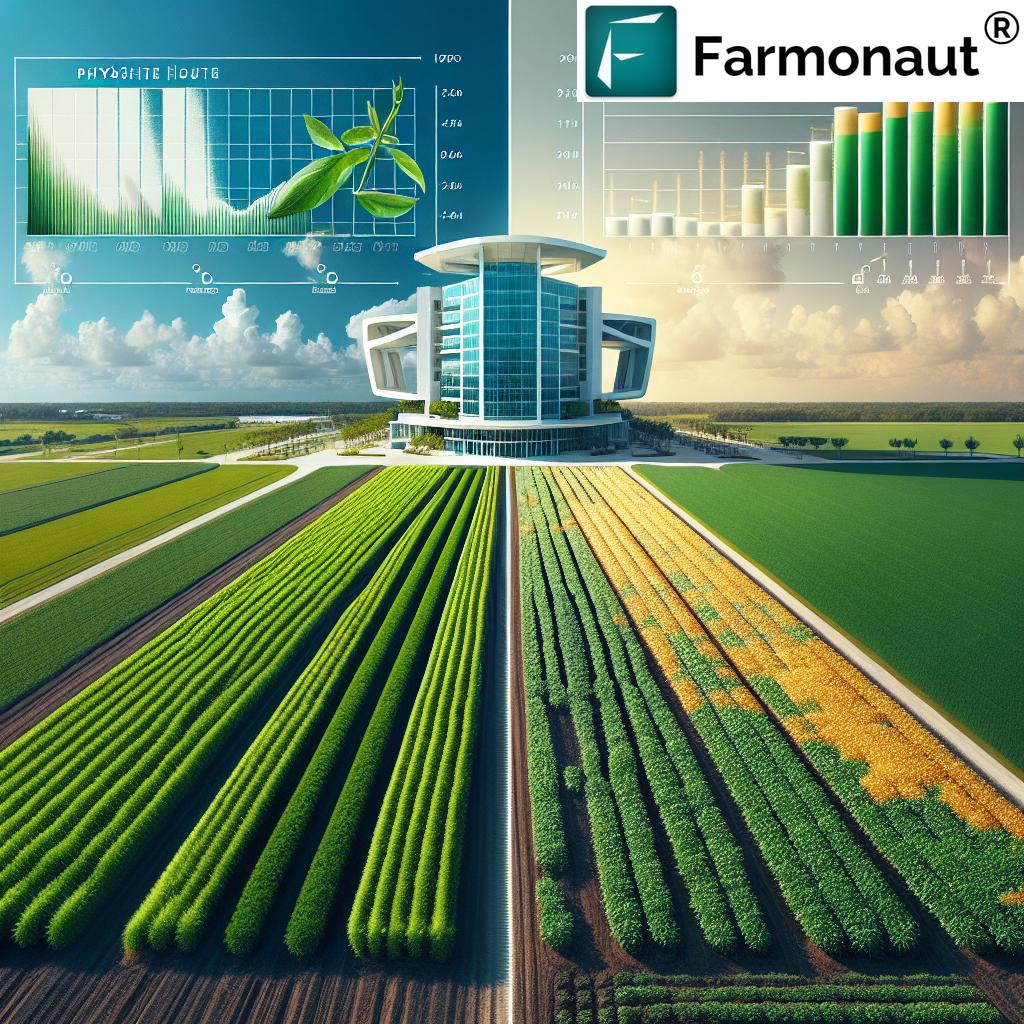
“Precision agriculture technologies have increased nutrient use efficiency by up to 30% in some Tampa farms.”
In the ever-evolving landscape of global agriculture, crop nutrients and fertilizers play a pivotal role in agricultural yield improvement. As we delve into the intricate world of farming in Tampa, FL, we’ll explore how precision agriculture technologies are revolutionizing crop nutrient management and farm production optimization. Our focus will be on the latest trends in phosphate and potash in farming, their impact on crop production, and how farmers in Tampa can leverage these advancements to boost their harvests.
The Importance of Crop Nutrients in Tampa’s Agricultural Landscape
Tampa’s agricultural sector is a vital component of Florida’s economy, with a diverse range of crops that thrive in its unique climate. From citrus fruits to strawberries and tomatoes, the success of these crops heavily depends on efficient nutrient management. Phosphate and potash, two essential crop nutrients, are particularly crucial for the region’s soil health and crop productivity.
- Phosphate: Vital for root development and energy transfer in plants
- Potash: Essential for water retention and overall plant health
Understanding the role of these nutrients is the first step in optimizing crop yields. However, the real game-changer lies in how we apply this knowledge using cutting-edge precision farming techniques.
Precision Agriculture: A New Era for Tampa’s Farmers
Precision agriculture technologies have transformed the way we approach crop nutrient management. By leveraging data-driven insights, farmers in Tampa can now make informed decisions about fertilizer application, irrigation, and overall crop management. This shift towards precision farming is not just about increasing yields; it’s about creating sustainable farming practices that benefit both the environment and the farmer’s bottom line.
Key Benefits of Precision Agriculture in Tampa:
- Optimized use of crop nutrients and fertilizers
- Reduced environmental impact
- Improved crop quality and yield
- Cost savings on inputs
One of the leading platforms in this space is Farmonaut, which offers advanced satellite-based farm management solutions. Through its web app and mobile applications, Farmonaut provides Tampa farmers with real-time insights into their crop health, enabling them to make data-driven decisions about nutrient application.


Balancing Act: Sustainable Farming Practices and Market Dynamics
As we strive for agricultural yield improvement, it’s crucial to balance sustainable farming practices with the realities of market dynamics. The global agriculture market trends significantly influence the availability and pricing of crop nutrients and fertilizers. Tampa farmers must stay informed about these trends to make strategic decisions about their nutrient management strategies.
“Global phosphate and potash market fluctuations can impact crop yields by 15-20% annually in Tampa’s agricultural sector.”
This statistic underscores the importance of staying ahead of market trends. By utilizing precision agriculture technologies, Tampa farmers can optimize their nutrient use efficiency, reducing their vulnerability to market fluctuations while maintaining high crop yields.
Innovative Approaches to Crop Nutrient Management in Tampa
Let’s explore some of the innovative approaches that Tampa farmers are adopting to optimize their crop nutrient management:
- Satellite-Based Crop Monitoring: Platforms like Farmonaut use satellite imagery to provide real-time data on crop health, allowing farmers to identify areas that need additional nutrients or are at risk of over-fertilization.
- Variable Rate Technology (VRT): This technology allows for precise application of fertilizers based on the specific needs of different areas within a field, reducing waste and improving efficiency.
- Soil Testing and Mapping: Regular soil testing and creating detailed soil maps help farmers understand the nutrient composition of their fields, enabling targeted fertilizer application.
- Crop Sensors: These devices measure plant health in real-time, providing immediate feedback on nutrient needs.
By implementing these technologies, Tampa farmers are seeing significant improvements in their agricultural yield and overall farm production optimization.
The Role of Phosphate and Potash in Tampa’s Agriculture
Tampa’s agricultural success is closely tied to the effective use of phosphate and potash. These essential nutrients play critical roles in plant growth and development:
- Phosphate: Crucial for energy transfer within plants, root development, and early season growth. It’s particularly important for crops like tomatoes and strawberries, which are significant to Tampa’s agriculture.
- Potash: Essential for water regulation in plants, disease resistance, and overall plant health. It’s vital for citrus fruits, a major crop in the Tampa area.
Understanding the specific needs of Tampa’s crops for these nutrients is crucial for optimizing farm production. Precision agriculture technologies allow farmers to apply these nutrients more efficiently, reducing waste and improving crop yields.
Comparative Analysis: Traditional vs. Precision Farming in Tampa
To better understand the impact of precision farming on crop nutrient management in Tampa, let’s compare traditional farming methods with precision agriculture approaches:
| Crop Type | Traditional Fertilizer Application | Precision Farming Approach | Estimated Yield Improvement (%) | Nutrient Use Efficiency (%) |
|---|---|---|---|---|
| Citrus | Uniform application across orchard | Variable rate based on tree health and soil data | 15-20% | 25-30% |
| Tomatoes | Fixed schedule, blanket application | Sensor-based, targeted application | 20-25% | 30-35% |
| Strawberries | Standard dosage per acre | Micro-dosing based on real-time plant needs | 18-22% | 28-32% |
This comparison clearly demonstrates the potential benefits of adopting precision farming techniques in Tampa’s agricultural sector. The increased nutrient use efficiency not only leads to better yields but also contributes to more sustainable farming practices.
Challenges and Solutions in Implementing Precision Agriculture in Tampa
While the benefits of precision agriculture are clear, Tampa farmers face several challenges in implementing these technologies:
- Initial Investment: The cost of precision farming equipment and software can be significant. However, platforms like Farmonaut offer affordable solutions that can be accessed through smartphones and tablets.
- Technical Knowledge: Many farmers need training to effectively use precision agriculture tools. Agricultural extension services and agtech companies are offering workshops and support to bridge this knowledge gap.
- Data Management: Handling large amounts of data can be overwhelming. Cloud-based solutions and user-friendly interfaces are making data management more accessible.
- Connectivity Issues: Some rural areas in Tampa may have limited internet connectivity. Satellite-based solutions and offline capabilities are helping to overcome this challenge.
By addressing these challenges, we can accelerate the adoption of precision agriculture technologies in Tampa, leading to more efficient crop nutrient management and improved agricultural yields.
The Future of Crop Nutrient Management in Tampa
As we look to the future, several emerging trends and technologies are set to further revolutionize crop nutrient management in Tampa:
- AI and Machine Learning: Advanced algorithms will provide even more accurate predictions for nutrient needs based on historical data, weather patterns, and crop performance.
- Drone Technology: Drones equipped with multispectral cameras will offer more detailed and frequent crop health assessments, allowing for even more precise nutrient application.
- Biostimulants and Nanotechnology: These emerging technologies promise to enhance nutrient uptake and efficiency, potentially reducing the overall need for fertilizers.
- Blockchain for Traceability: Implementing blockchain technology in the agricultural supply chain will improve transparency and traceability of crop nutrients, ensuring quality and sustainability.
Tampa farmers who stay ahead of these trends and adopt new technologies will be well-positioned to optimize their crop yields and maintain a competitive edge in the global market.
Economic Impact of Optimized Crop Nutrient Management
The economic benefits of optimized crop nutrient management extend beyond individual farms. For Tampa’s agricultural sector as a whole, improved nutrient management practices can lead to:
- Increased overall agricultural output
- Better quality crops that command higher market prices
- Reduced environmental impact, potentially leading to cost savings on environmental mitigation
- Improved resilience to market fluctuations in fertilizer prices
- Enhanced food security for the region
By leveraging precision agriculture technologies and adopting sustainable farming practices, Tampa’s farmers can contribute significantly to the region’s economic growth while also ensuring the long-term viability of their operations.

Farmonaut: Empowering Tampa Farmers with Precision Agriculture
In the realm of precision agriculture, Farmonaut stands out as a powerful tool for Tampa farmers looking to optimize their crop nutrient management. By leveraging satellite imagery and advanced analytics, Farmonaut provides farmers with:
- Real-time crop health monitoring
- AI-based advisory systems for nutrient management
- Weather forecasts and alerts
- Resource management tools
These features enable Tampa farmers to make data-driven decisions about when and where to apply fertilizers, potentially leading to significant improvements in nutrient use efficiency and crop yields.
Access Farmonaut’s powerful tools:
For developers looking to integrate Farmonaut’s capabilities into their own applications, the company offers a robust API. Detailed documentation for the API can be found in the API Developer Docs.
Best Practices for Crop Nutrient Management in Tampa
To help Tampa farmers maximize the benefits of precision agriculture in their nutrient management strategies, here are some best practices to consider:
- Regular Soil Testing: Conduct comprehensive soil tests at least once a year to understand the nutrient composition of your fields.
- Create Nutrient Management Plans: Develop detailed plans that account for crop type, soil conditions, and expected yields.
- Utilize Precision Agriculture Tools: Implement technologies like Farmonaut to monitor crop health and make data-driven decisions.
- Practice 4R Nutrient Stewardship: Apply the Right source of nutrients at the Right rate, Right time, and in the Right place.
- Monitor and Adjust: Continuously track crop performance and be prepared to adjust your nutrient management strategy as needed.
- Educate and Train: Invest in ongoing education for yourself and your team to stay up-to-date with the latest nutrient management techniques and technologies.
By implementing these practices and leveraging precision agriculture technologies, Tampa farmers can significantly improve their crop yields while also promoting sustainable farming practices.
The Global Context: Tampa’s Role in Sustainable Agriculture
As we optimize crop nutrient management in Tampa, it’s important to consider the global context. The agricultural practices adopted in Tampa can have far-reaching implications:
- Food Security: Improved yields in Tampa contribute to global food security, especially as the world population continues to grow.
- Environmental Impact: Sustainable nutrient management practices in Tampa help reduce the environmental footprint of agriculture on a global scale.
- Knowledge Sharing: Innovations in Tampa’s agricultural sector can be shared and adapted in other regions facing similar challenges.
- Market Influence: As a significant producer of certain crops, Tampa’s agricultural practices can influence global market trends and prices.
By embracing precision agriculture and optimizing crop nutrient management, Tampa farmers are not only improving their own operations but also contributing to more sustainable and efficient global agriculture.
Conclusion: Embracing the Future of Agriculture in Tampa
As we’ve explored throughout this guide, optimizing crop nutrient management through precision farming techniques offers tremendous potential for Tampa’s agricultural sector. By leveraging advanced technologies like satellite-based monitoring, AI-driven analytics, and variable rate application systems, farmers can significantly improve their yields, reduce costs, and promote sustainable farming practices.
The journey towards fully optimized crop nutrient management is ongoing, with new innovations and technologies continually emerging. Tampa farmers who stay informed about global agriculture market trends, embrace precision agriculture technologies, and prioritize sustainable farming practices will be well-positioned to thrive in the evolving agricultural landscape.
By adopting tools like Farmonaut and implementing the best practices outlined in this guide, Tampa’s farmers can lead the way in agricultural innovation, ensuring a prosperous and sustainable future for the region’s agriculture. As we move forward, the focus on precision, efficiency, and sustainability in crop nutrient management will not only benefit individual farms but will also contribute to Tampa’s role as a leader in modern, responsible agriculture.
FAQs: Crop Nutrient Management in Tampa
- Q: What are the most important nutrients for Tampa’s main crops?
A: The most crucial nutrients for Tampa’s main crops like citrus, tomatoes, and strawberries are nitrogen, phosphorus, and potassium. However, secondary nutrients like calcium, magnesium, and sulfur, as well as micronutrients, are also essential for optimal crop health and yield. - Q: How can precision agriculture help in reducing fertilizer costs?
A: Precision agriculture technologies enable farmers to apply fertilizers more efficiently by identifying specific areas that need nutrients. This targeted approach reduces overall fertilizer use, cutting costs while maintaining or improving crop yields. - Q: What is the role of soil testing in nutrient management?
A: Soil testing is crucial for understanding the current nutrient levels in your soil. It helps in creating tailored fertilization plans, avoiding over-application of nutrients, and ensuring that crops receive the right balance of nutrients for optimal growth. - Q: How often should I update my nutrient management plan?
A: It’s recommended to review and update your nutrient management plan annually. However, you should also make adjustments throughout the growing season based on crop performance, weather conditions, and any significant changes in your farming practices. - Q: Can organic farming benefit from precision nutrient management techniques?
A: Absolutely. Organic farmers can use precision agriculture tools to monitor crop health, soil conditions, and apply organic fertilizers more efficiently. These techniques can help organic farmers optimize their nutrient management while adhering to organic farming principles.





